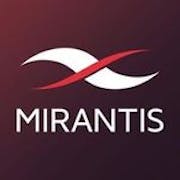Are you tired of experiencing slow and unreliable application performance? If so, you're not alone. Poor application performance irritates users, drains productivity, and can negatively impact customer satisfaction, among other things. The good news is that application performance management software can help you track, monitor, and optimize your app's performance, ensuring that your customers have a seamless user experience. However, selecting the right APM software can be a daunting task, given the multitude of options available on the market today. In this guide, we'll walk you through what to look for in an APM solution, including its features, pricing, and usability, that will help you make an informed decision.
What is Application Performance Management Software
Application Performance Management (APM) software is a tool used to monitor and optimize the performance of web applications, software, computer systems, and networks. It examines the application's entire performance, starting from user experience to infrastructure response. In other words, APM ensures that an application performs optimally, delivers an excellent user experience, and meets business objectives. Businesses use APM software for various purposes, including: - Identifying and resolving issues quickly: APM software provides real-time data on application performance, allowing developers and IT teams to identify and address issues as they arise. - Enhancing user experience: With APM software, businesses can proactively monitor user experience, detect performance problems, and identify opportunities for improvement. - Reducing downtime: APM software detects and quickly resolves issues, minimizing downtime and ensuring business continuity. - Streamlining resource allocation: By providing insight into application performance, APM software ensures that businesses allocate resources effectively and efficiently. - Improving productivity: With APM software, businesses can optimize performance, reduce downtime, and enhance user experience, ultimately improving employee productivity. Many types of companies use APM software, including eCommerce businesses, financial institutions, healthcare providers, government agencies, and more. Any business that relies on web applications or software to deliver products or services can benefit from APM software. In conclusion, APM software is a powerful tool that provides businesses with a comprehensive understanding of application performance, enabling them to optimize user experience, minimize downtime, and allocate resources effectively. Companies from various sectors use APM software to enhance their operations, and it has become an essential aspect of modern business operations.
Benefits of Application Performance Management Software
As businesses expand their online presence and rely increasingly on complex software and applications, the need for reliable performance management software is greater than ever. Application Performance Management (APM) software is designed to diagnose and solve any issues that may arise during the use of an application. APM is essential for any business that relies on software to provide services to customers.Below are the main benefits of using APM software: - Improve User Experience: APM software ensures that end-users are satisfied with the application's performance. This software monitors the application's speed, load times, and user experience. By improving user experience, businesses can increase customer satisfaction, retention, and revenue. - Reduce Downtime: The cost of downtime for businesses can be significant, both in terms of revenue and reputation. APM software can identify potential issues before they occur, allowing businesses to take proactive measures to prevent downtime. - Improve Time-to-Market: APM software can help businesses quickly identify and resolve performance issues, which reduces time-to-market. By releasing new features and updates faster, businesses can stay ahead of their competition. - Improve Efficiency: APM software allows businesses to monitor the performance of their applications and identify areas where they can optimize performance. By improving the efficiency of their applications, businesses can save time and resources. - Lower Costs: By identifying and solving performance issues quickly, businesses can save money on maintenance and support costs. APM software can also help businesses identify areas where they can optimize performance, reducing the need for additional hardware and software. - Increase ROI: By improving user experience, reducing downtime, improving time-to-market, improving efficiency, and lowering costs, businesses can increase their ROI. In conclusion, Application Performance Management software is essential for businesses that rely on software to provide services to customers. By improving user experience, reducing downtime, improving time-to-market, improving efficiency, lowering costs, and increasing ROI, businesses can stay ahead of their competition and grow their revenue.
Features of Application Performance Management Software
Application Performance Management (APM) software is a necessity for any business that wants to ensure that their applications run smoothly and efficiently. These software tools are designed to monitor application performance, identify any issues, and provide insights that developers and IT teams can use to optimize their systems. Here are 10 of the most common features of APM software: 1. Real-time monitoring: APM tools provide real-time monitoring of applications, tracking metrics such as response times, CPU and memory usage, and network usage. 2. End-user experience monitoring: APM tools monitor the end-user experience, tracking metrics such as page load times and transaction completion times. This provides insights into how users interact with your applications and can help you identify any issues that may be impacting their experience. 3. Transaction tracing: APM tools track and trace individual transactions through the system, providing insights into performance bottlenecks and potential areas for optimization. 4. Alerting and notifications: APM tools can send alerts and notifications when performance metrics fall outside of acceptable ranges, allowing you to quickly address any issues and prevent downtime. 5. Root cause analysis: APM tools can help identify the root cause of performance issues, making it easier to fix problems and improve overall application performance. 6. Diagnostics and debugging: APM tools provide diagnostic and debugging tools that make it easier to identify and troubleshoot issues, reducing the time it takes to resolve problems. 7. Analytics and reporting: APM tools provide analytics and reporting features that make it easier to track performance trends over time and identify areas where improvements can be made. 8. Scalability and capacity planning: APM tools can help with scalability and capacity planning, providing insights into how applications perform under different loads and helping you plan for future growth. 9. Integration with other tools: APM tools can integrate with other software tools, such as DevOps and ITSM platforms, making it easier to manage your entire application stack from a single interface. 10. Cloud readiness: APM tools are designed to work seamlessly with cloud-based applications, providing insights and monitoring capabilities that are critical for ensuring optimal performance in a cloud environment. With these 10 features, APM tools can help your business optimize application performance, reduce downtime, and improve the end-user experience. Whether you're running a small business or a large enterprise, investing in APM software is a smart move that can pay dividends in the long run.
Considerations of Application Performance Management Software
Application Performance Management (APM) software is becoming increasingly important for businesses of all sizes as they seek to improve their operations and provide a better experience for their customers. However, with so many options available, it can be challenging to choose the right one. Businesses looking to purchase APM software should consider the following factors during the selection process: 1. Functionality – The software should be able to monitor and analyze the performance of all applications, whether they are on-premises, in the cloud, or hybrid environments. It should also provide a comprehensive set of metrics that help the business identify and diagnose performance issues. 2. Ease of use – APM software should be user-friendly and provide an intuitive interface that allows IT teams to quickly and easily identify and resolve performance issues. It should also be easy to install and configure. 3. Cost – APM software can be expensive, so businesses should consider the total cost of ownership, including licensing and maintenance fees, as well as any additional costs such as training, implementation fees, and any required hardware. 4. Scalability – As a business grows, its IT infrastructure will inevitably become more complex. The APM software should be able to scale up to meet the changing needs of the business without requiring significant retooling or customization. 5. Integration – APM software should be able to integrate with other systems, such as network management tools and cloud providers, to provide a comprehensive overview of the IT environment. 6. Security – APM software should meet the highest standards of security and compliance, particularly for businesses in regulated industries such as finance and healthcare. 7. Support – The APM software vendor should provide robust support services, including documentation, access to technical experts, and 24/7 customer support to ensure the smooth operation of the software and the data that it’s collecting. In conclusion, selecting the right APM software requires careful consideration of these factors. Businesses must determine the appropriate balance between functionality, ease of use, cost, scalability, integration, security, and support, ensuring that the system meets their specific needs and delivers the required return on investment. Making a comprehensive evaluation before investing in APM software can help businesses avoid costly mistakes and set themselves up for success in the long run.
Software Trends for Application Performance Management Software
As businesses continue to rely more heavily on technology, the importance of application performance management (APM) software is only growing. With constant innovation in the software industry, it's important to stay on top of the latest trends to ensure that your APM software keeps up with the latest technological advancements. One of the biggest trends in APM software is the increased use of artificial intelligence (AI) and machine learning (ML) technologies. These technologies can help developers identify performance issues faster and more accurately, ultimately leading to improved user experiences. Additionally, AI and ML can also aid in predicting and preventing potential issues before they even occur. Another trend to watch out for in the APM software space is the rise of cloud-based platforms. With the increasing adoption of cloud technology, it's no surprise that APM software is following suit. Cloud-based APM solutions provide flexibility, scalability, and reduced infrastructure costs, making it an attractive option for many organizations. A third trend in APM software is the growing importance of security features. As cyber threats continue to evolve and become more complex, APM software must keep up in order to provide the level of protection that businesses require. This means that security features such as real-time threat detection, automated response, and risk assessment are becoming critical components of any APM solution. Lastly, the integration of APM and DevOps is a trend that is gaining traction. DevOps is a software development approach that emphasizes collaboration and communication between development and operations teams. By integrating APM software into this process, teams can identify and resolve performance issues quickly and efficiently, reducing downtime and improving overall productivity. In conclusion, keeping up with the latest trends in APM software is essential for businesses looking to stay ahead of the curve in the ever-evolving technology landscape. From AI and ML to cloud-based platforms and security features, the future of APM software is sure to be exciting and full of possibilities for continued innovation.







